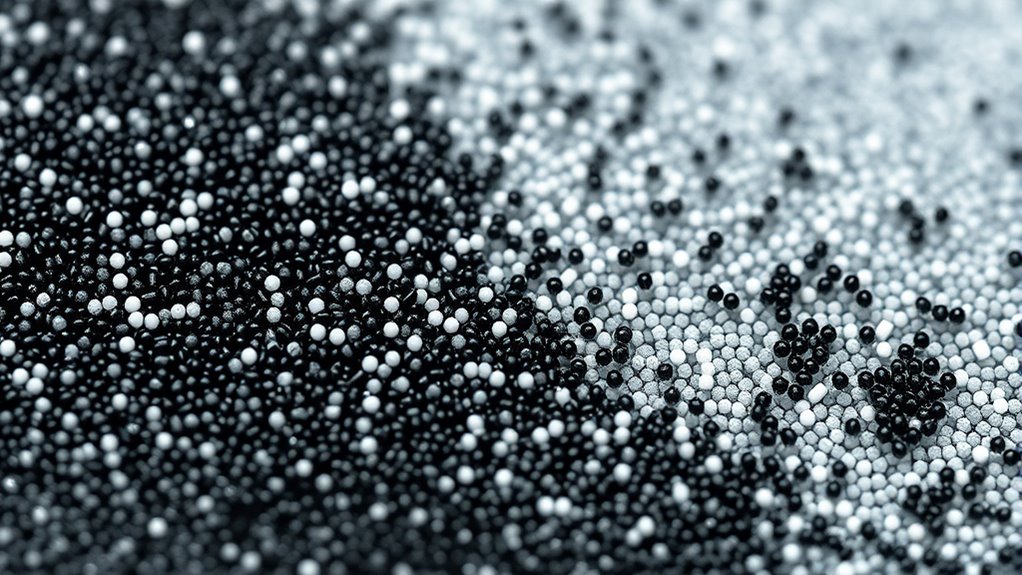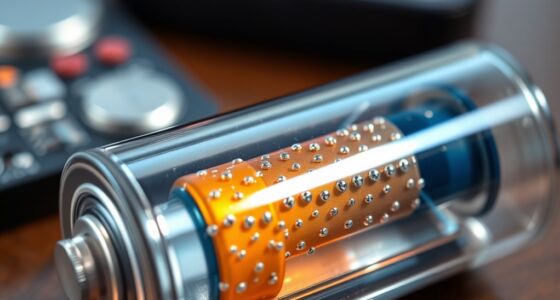E-paper displays work by using tiny microcapsules filled with charged black and white pigment particles suspended in a fluid. When an electric field is applied, these particles move—positive particles go toward the surface while negative ones move away—creating images that mimic ink on paper. Because the image stays without power, and only uses energy when changing, this chemistry makes your e‑reader ultra-efficient. Keep exploring to see how advancements further improve this fascinating technology.
Key Takeaways
- E-paper displays use microcapsules with charged pigment particles that move under electric fields, creating visible images.
- Charged black and white particles are suspended in fluid within microcapsules, enabling reversible movement for display updates.
- The core layer’s microcapsules are encapsulated in durable polymers, ensuring long-term stability and resistance to clumping.
- Electric fields generated by electrodes direct charged particles, forming high-contrast, paper-like images that can be maintained without power.
- The chemistry of stable, charged pigments and microcapsules allows low power consumption, fast refresh rates, and durable, flexible screens.
Understanding the Composition of E-Paper Displays
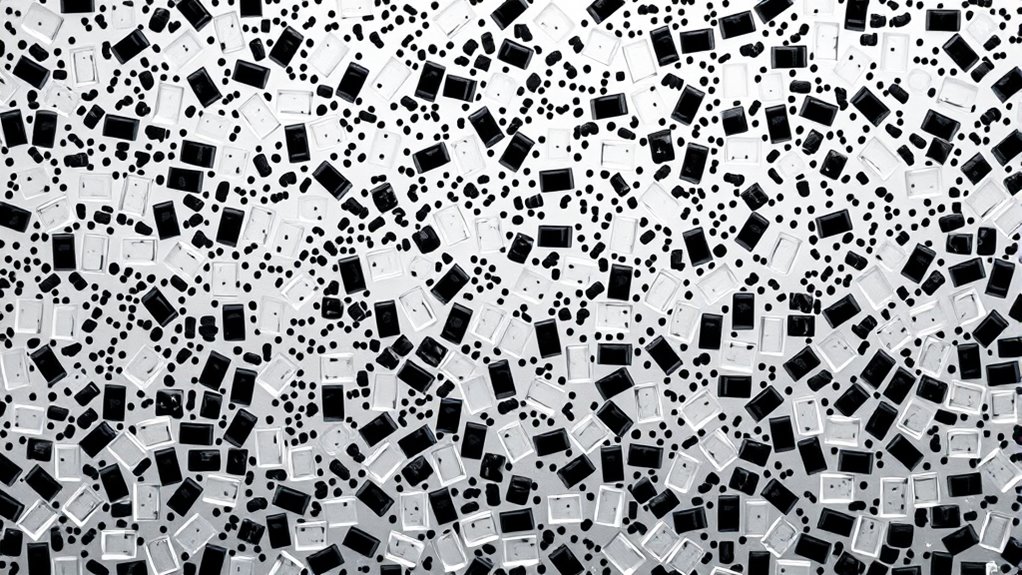
E-paper displays are built from a combination of flexible materials and specialized components that work together to create a thin, bendable screen. They use plastic substrates, like polyethylene terephthalate (PET), which are lightweight, transparent, and flexible. These substrates are coated with conductive, transparent layers such as indium tin oxide (ITO), ensuring electrical connectivity. The core functional layer contains microcapsules filled with charged particles—black and white pigments suspended in a clear, stable fluid. These microcapsules, made of durable polymers, allow particle movement under electric fields, forming visible images. Modern e-paper can include color filters or pigments to display a wide spectrum of colors. The microcapsule technology relies on precise control of particle movement to produce clear images with low power consumption. The materials used often include innovative polymers and conductive layers to improve flexibility and longevity. Additionally, the development of flexible electronic components has contributed to more durable and versatile e-paper displays. Encapsulation layers protect the microcapsules from environmental damage, enhancing durability and long-term performance.
The Role of Microcapsules and Charged Particles
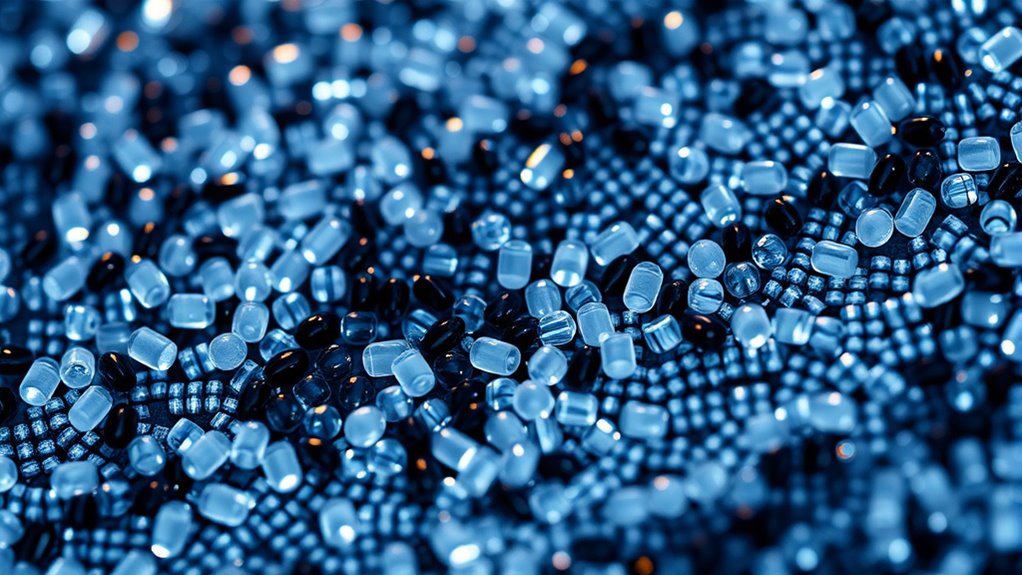
Microcapsules are the fundamental building blocks that enable the dynamic image display in e-paper screens. They contain a clear fluid medium suspending charged pigment particles—white particles carry a negative charge, and black particles are positively charged. Each microcapsule is microscopic, allowing dense packing for high-resolution images. The clear fluid creates a low-friction environment, enabling particle movement when electric fields are applied. Encapsulation isolates individual pigment particles, preventing clumping and ensuring stable images. When an electric field is introduced, charged particles migrate toward the oppositely charged electrodes, revealing either black or white on the surface. This movement is reversible, allowing images to switch dynamically. The system’s simplicity and stability rely on these charged particles and microcapsules working together to produce crisp, high-contrast visuals without continuous power. The charge polarity ensures the proper movement and display of images in e-paper technology. Additionally, the material composition of microcapsules is carefully designed to withstand repeated switching without degradation, contributing to the longevity of e‑readers.
How Electric Fields Move Particles to Create Images
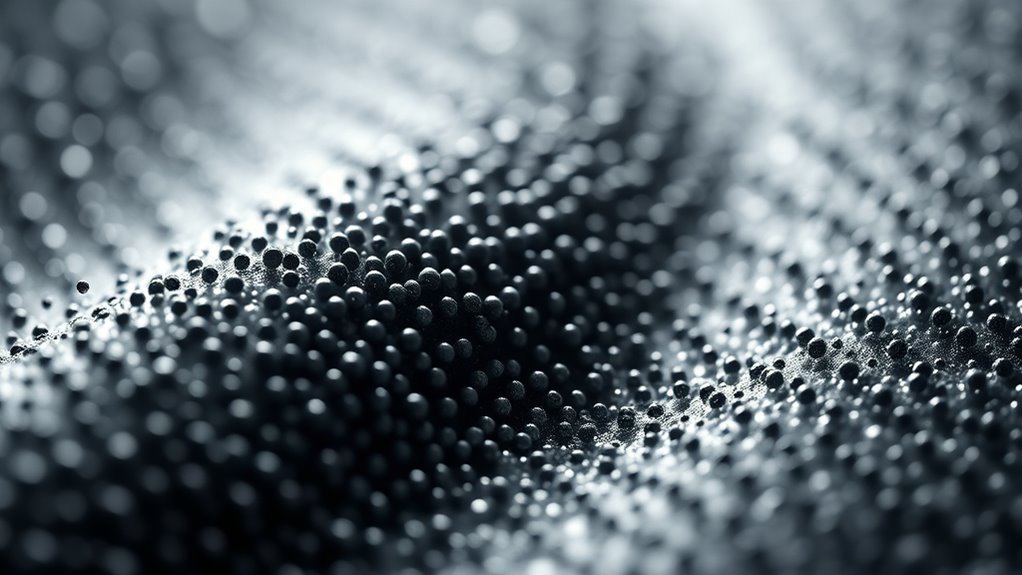
Electric fields are the driving force that moves charged particles within the display layer to form images. When voltage is applied across electrodes, it creates localized electric fields that direct particles to specific positions. The polarity determines whether particles move toward the surface or deeper inside, changing the visible image. The precise control of voltage at each pixel allows detailed, colorful images by rearranging black, white, or colored particles. The strength of the electric field influences how quickly and accurately particles migrate, affecting refresh rates. When the electric field reverses or shifts, particles respond accordingly, enabling dynamic updates. This electrophoretic movement is reversible and smooth, allowing the display to switch images rapidly without degrading the particles or the medium. Additionally, the effectiveness of the movement depends on proper filter maintenance and correct placement, which ensure consistent image quality and responsiveness. The electrophoretic process also relies on the stability of particle suspensions to maintain long-term image clarity and performance. Proper particle suspension stability is essential to prevent image fading or ghosting over time.
The Bistable Nature and Its Power-Saving Benefits

Because they can hold an image without continuous power, bistable displays are highly energy-efficient. They only need power when updating the image, not to maintain it. This means your e-reader consumes minimal energy, extending battery life considerably. This energy efficiency is a key advantage of bistable display technology. The mechanism involves charged particles in electrophoretic or cholesteric liquid crystal technologies that stay in place without power. No backlight is necessary, as these reflective displays rely on ambient light, further saving energy. Devices like IoT sensors benefit from this low power usage, enabling long-term operation. Bistability also makes displays more durable and suitable for outdoor use, with high contrast and sunlight readability.
The Visual Effect: Mimicking Paper With Reflective Technology

Reflective technology is what allows e-paper displays to mimic the look and feel of traditional paper. It reflects ambient light instead of emitting its own, creating a glare-free, paper-like reading experience—especially in bright sunlight.
Unlike LCDs or LEDs, e-paper relies solely on external light sources for visibility. An anti-glare coating enhances readability and reduces eye strain, making the display comfortable for long reading sessions.
The high contrast between black and white particles, suspended in microcapsules, produces crisp images that resemble ink on paper. This reflective surface, combined with the display’s ability to maintain images without power, creates a realistic, stable visual experience.
As a result, e-paper delivers sharp, clear text and images that closely resemble traditional printed material while remaining easy on your eyes.
Advances and Future Directions in E-Paper Chemistry
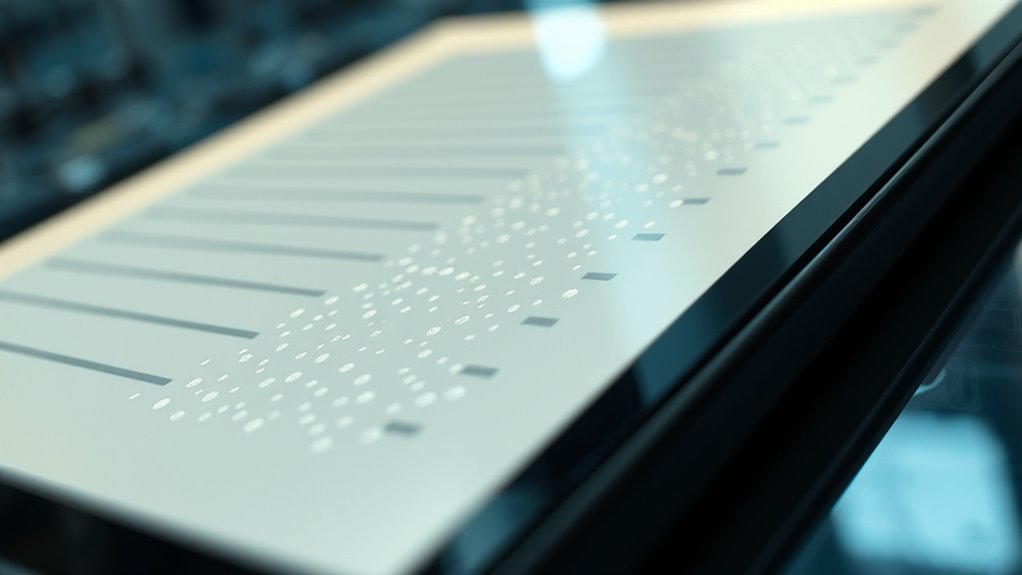
Recent advances in e-paper chemistry focus on enhancing display performance through innovative electrophoretic and electrochemical technologies. You benefit from faster response times and higher resolution as researchers improve nanoparticle control and optimize their interactions using electrochemical methods. These techniques also help develop more stable, efficient nanoparticle inks, reducing power consumption and extending display lifespan.
Molecular engineering approaches, like directed evolution, enable the creation of new pigments with better color retention and contrast. Material science breakthroughs, including flexible polymers and environmentally friendly components, make e-paper more durable and adaptable for flexible displays.
Additionally, low-redox-potential materials and bioelectrocatalytic methods promote energy efficiency and sustainability. These developments pave the way for smarter, greener, and more versatile e-paper devices in the future.
Frequently Asked Questions
How Durable Are E-Paper Displays Under Everyday Usage?
E-paper displays are highly durable for everyday use. You’ll find that they withstand handling without much wear, thanks to their robust materials and physical resilience.
They’ve a long lifespan, often exceeding ten years, with minimal failure rates. Since they only update when needed, they experience less degradation.
Plus, their reflective, scratch-resistant surface makes them suitable for frequent use, ensuring your device stays functional and looking good over time.
Can E-Paper Displays Show Color Images Effectively?
Sure, e-paper displays can show color images, but don’t expect Hollywood vibrancy. They use tiny particles and color filters, which can reduce resolution and contrast.
Advanced tech like ACeP or cholesteric liquid crystals improves color range and brightness, yet it’s still a balancing act. While they’re great outdoors and low power, vibrant, true-to-life colors remain a work in progress—so don’t hold your breath for perfect, dazzling images.
What Environmental Factors Affect E-Paper Display Longevity?
Environmental factors substantially impact your e-paper display’s longevity. You should keep it within 0°C to 50°C to prevent damage from extreme temperatures.
Avoid high humidity and water exposure, which can cause circuitry failure. Minimize direct sunlight to prevent fading and UV damage.
Also, limit screen refreshes to extend lifespan, as frequent updates accelerate wear.
Properly storing and operating your device in stable conditions helps guarantee it lasts longer and performs reliably.
How Quickly Can E-Paper Displays Refresh Compared to LCDS?
You’re wondering how quickly e-paper displays refresh compared to LCDs. E-paper updates are slow, typically around once every few seconds, often about 1 Hz or less.
In contrast, LCDs refresh at around 60 Hz, allowing smooth, rapid changes. This slow refresh rate makes e-paper ideal for static content like reading, but unsuitable for fast-moving visuals or videos, which require the quick response of LCD technology.
Are There Limitations to the Size and Flexibility of E-Paper Screens?
You’ll find that e-paper screens have size and flexibility limits. Larger displays, beyond 42 inches, require complex, costly manufacturing, and seamless tiling adds to the challenge.
Flexibility is limited because the thin films are fragile and hard to bend repeatedly. Most e-paper screens are rigid or semi-flexible, not fully foldable.
These constraints make e-paper less suitable for very large, flexible devices, but ongoing tech advances could improve this in the future.
Conclusion
Now that you understand how e‑paper displays work, it’s clear they’re like a magic mirror, bringing paper to life with chemistry and clever technology. By harnessing microcapsules and electric fields, they create vivid images while saving energy. This delicate dance of particles keeps your screen vivid yet power-efficient, proving that science can turn simplicity into a work of art. E‑paper’s future promises even brighter, more sustainable pages in the story of digital reading.
